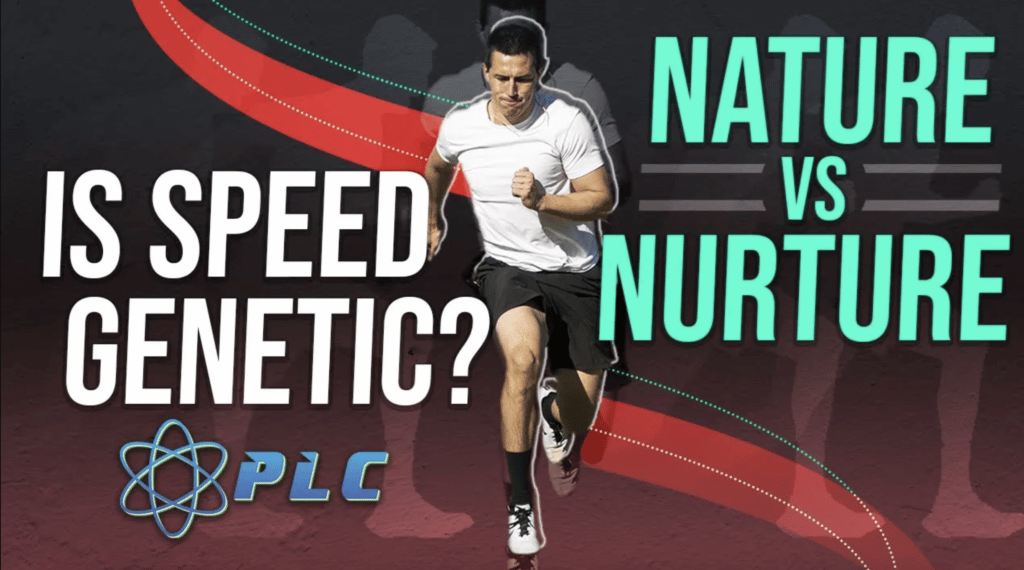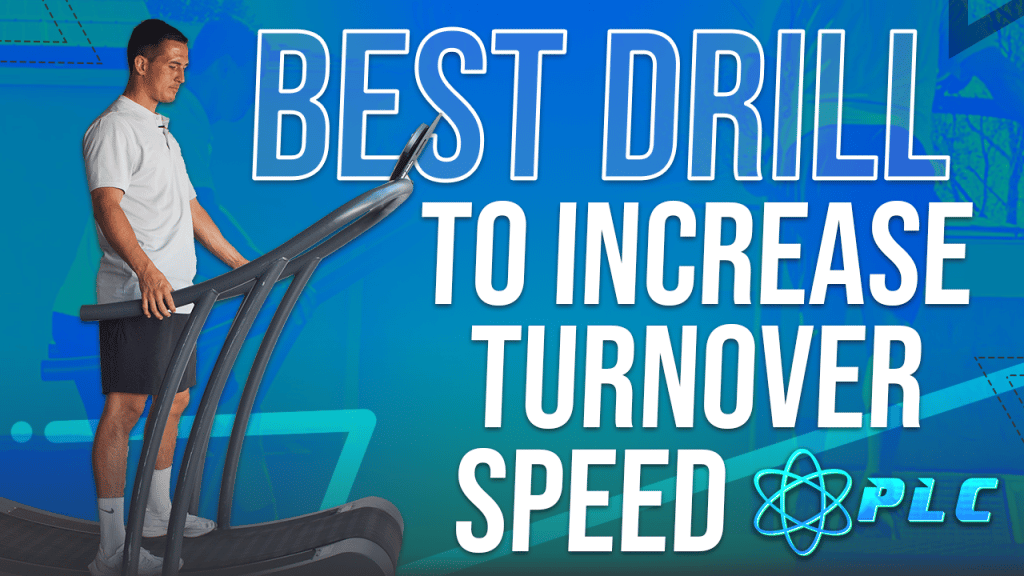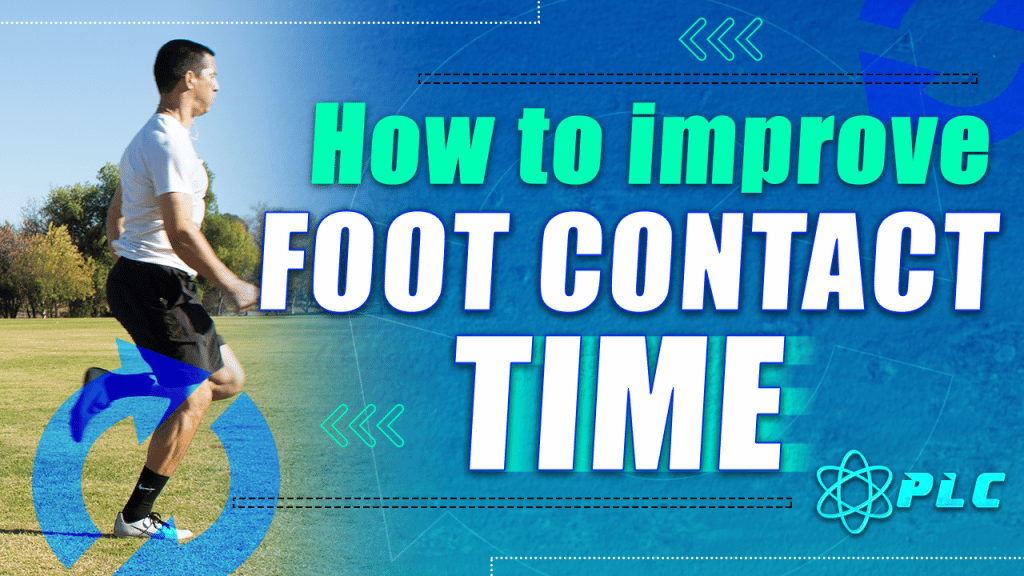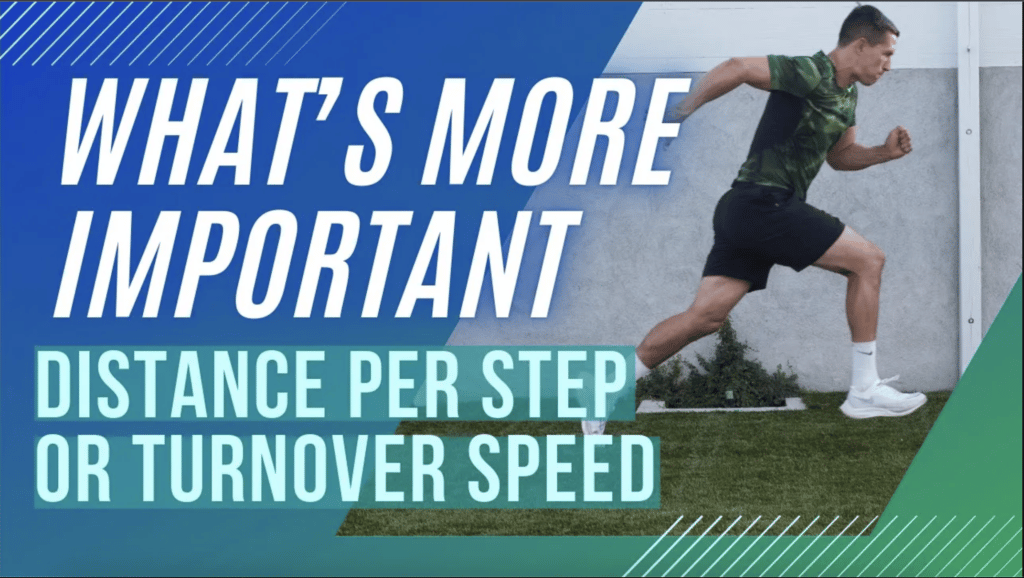How To Increase Top Speed
Nov 14, 2023
Introduction
In pretty much every sport, top speed is an essential part of your success and/or your team’s success. My name is Morey Croson and I recently started consuming as much information as I could to help athletes increase their top speed.
A little over 5 years later I have become one of the best speed training coaches in Los Angeles and have over 500 videos on YouTube helping athletes improve their maximum speed. In this blog we will go over much of what I learned in the speed development world to help you increase your top end speed.
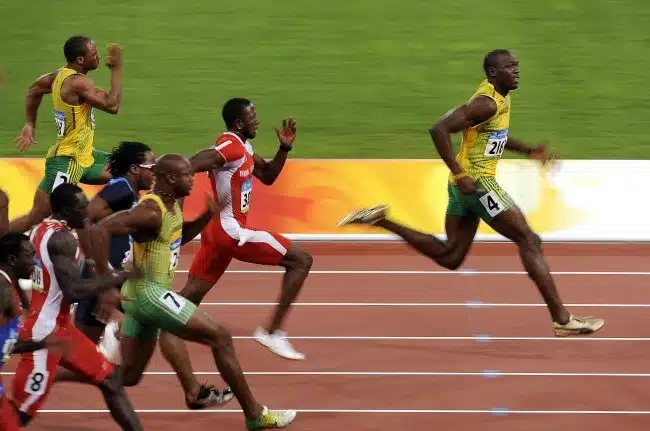
What Is Top Speed?
The overall fastest possible speed you can reach in miles per hour or kilometers per hour. Overall top end speed is important especially in sports because typically athlete’s are running in short bursts to chase down a ball carrier or run around the basis. As opposed to a long distance race where it is more about endurance and long term running mechanics.
Isn’t Top End Speed Genetic?
I have had many conversations about speed development and this is something that comes up often. It is true there are people that do develop the correct sprint mechanics to run faster than most athletes their age or who play their sport. However, even without doing practicing sprint specific drills it is still a skill that was trained. Whether they were running with their siblings, friends, pets, etc. While growing up all people who are fast did some speed training, potentially without even knowing.
Which means that top end speed is something that is developed and trained. Especially when getting into higher and higher speeds. We have all seen athletes with great bursts or are able to get to their top speed quickly but have difficulty sustaining it for very many steps. This is simply because there is no understanding of the correct technique.
How Important Are Sprint Mechanics
When it comes to improving speed as well as developing a higher and higher maximum speed it is critical and possibly the most important aspect. I say possibly because there are some people who through their life, without following any specific training methods are able to run amazingly fast utilizing just raw power and strength. The chances of someone like this reading this blog post is basically zero. Therefore, you will have to rely on technical ability and following excellent training principles in order to be amongst the fastest athletes in your sport.
How Fast Do I Need To Be?
Depending on the sport there are a wide variety of different answers to this question. For track and field, someone running the 100m at a high level would be in the 25mph/40kmh for men. While for the majority of the field sports would be around 23mph/37kmh to put you amongst the fastest in the world. Then for women 22-23mph or 36kmh for the 100m and 20mph or 32kph would put you amongst the fastest in any field sport. For many people that probably seems not too far away but when it comes to sprinting the difference between 20 and 21mph is a big one!
So How Do You Improve Running Speed?
Well I wish there was a simple answer to that question but the best answer is that it depends. In this post I will try to give you as many helpful tips and tricks to help you improve your speed as fast as you can. Additionally, I will be going over some of the basics in sprint training so you can actually understand speed development.
The Sprinting Basics
The most important part of improving sprint performance will be improving the time on the ground as well as the time off the ground. At the end of the day sprinting is simple, how fast can you get from point A to point B. In order to do that each foot is rapidly striking the ground, toeing off the ground and cycling through to the next foot contact.
So in order to improve top speed we must understand how to use our bodies as well as the ground in the most efficient way as possible. Now nothing can be improved unless it is measured. So I recommend you measuring your 40 yard dash, 60m, 5-10-5, something to give us a baseline in order to improve.
Breaking Down The Numbers
What differentiates my training program in comparison to most others (at least to my knowledge) is my focus on the numbers. For instance, for the 40 yard dash an athlete that is 5’11” on average is taking 20 steps in order to run the full 40 yards. At top speed the average time spent on the ground is .1 seconds and the average time the foot spends off the ground is .32 seconds.
So when I begin working with an athlete who is looking to improve their top speed, the first thing I do is determine height, weight and running style. This way I can create a model for the technical aspects of their sprint performance we need to focus on and improve.
Most athletes seeking speed development need to improve both their contact time (aka time on the ground) as well as their turnover time (aka time spent off the ground). For this particular example though let’s say you film yourself sprinting and find your foot contact time is .1 seconds but turnover time is .37 seconds while taking the same 20 steps in 40 yards (very unlikely). This would be easy to identify the main area of focus in order to improve sprint performance (turnover time).
How Do We Improve Turnover Time Or Turnover Rate
There are a few ways to improve turnover speed but this ends up being a pretty difficult thing to actually facilitate. The easiest way is to use downhill sprint workouts at a grade between 5-10%, which means not too steep. When running downhill it forces the lower body to cycle faster because of the momentum from running downhill. The idea would be to gradually increase the turnover speed as you go, then hold top speed for at least 15-20 steps.
Another way to improve turnover rate and in my opinion this is most effective, is utilizing a high speed treadmill. Usually a high speed treadmill is able to get up to 26-28mph and are usually very expensive. You may ask the question is anyone able to sprint 28mph and the answer is yes but that is not the point. The point is to be able to train the legs to turnover faster by sprinting at an over speed. In regular training you can only sprint your maximum speed but with the high speed treadmill doing more work it allows you to maintain higher speeds.
Lastly, there are the basic exercises to help with turnover rate which would be building core strength especially with fast flutter kicks, ladder drills, quick high knees, etc. There is also band training where the band actually pulls you forward. This is the opposite of what a lot of people do with resisted sled sprint training where the sled is holding you back. In this case the band would be pulling you forward at maximum velocity forcing your body to respond.
*Note: It is important when doing downhill sprints or assisted band sprints that safety is your number 1 priority. This should be done by experienced sprinters, not someone who is just starting speed workouts.
Improve Foot Contact Time
The next part of building maximum speed is improving foot contact time. There are a few different factors that help with force application of the foot which we can go into more detail.
The key to maximizing foot contact time is improving how the foot touches the ground. When striking the ground at top speed the foot wants to be as close to right underneath the hip as possible. Additionally, the toe wants to be facing slightly downwards at foot strike in order to generate more power out of the foot and ankle joint.
Some coaches and athletes have the wrong idea about foot contact where they believe the toes should be up while striking the ground. While I use the ‘toe up’ queue primarily to help front side mechanics, when it comes to striking the ground the toe actually wants to be coming down. We can see Usain Bolt here pulling the foot underneath and striking the ground with the forefoot as opposed to the ball of the foot. This horizontal force into the ground
Just understanding the proper mechanics are probably most important when it comes to foot contact time but the weight room and specific speed training workouts will help as well.
This is why plyometrics is such an important part of speed training. In order to maximize ground force the athlete must have an excellent understand of how to utilize their stretch shortening cycle. This is the optimal amount of stretch needed in the muscle to then have the most explosive muscle shortening. Plyometric training is something athletes should be doing to improve overall sports performance on top of speed development. Some quick examples of plyometrics are bounds, depth jumps, double leg and single leg bounds, repetitive vertical jumps, jump rope and many, many more.
Lastly, strength training in the lower leg and specifically in the calves, feet, shins, etc. will also help with balance and control while sprinting. The key to foot contact time is striking the ground as forcefully as possible but being able to control and stabilize to then push right back off. In order to achieve this athletes must be very strong in their lower body as well as trained balance in the muscle groups in the front, back and side of the foot and ankle. Here are a couple example of some great strength training exercises to try in your next speed workout.
The Correct Distance Per Step
This is another question I get often when starting a new training cycle with an athlete. How many steps should they be taking in the 40, 60, 100 or whichever applies to you?
I cannot understate the value of understanding the steps needed. The equation of speed cannot be solved without distance so we must understand the distance covered in order to get a full picture of an athlete’s strengths and weaknesses.
Unfortunately, it is not as black and white with the distance per step as it is with the turnover speed and the foot contact time. At maximum speed top athletes should be able to reach at least 2.20 meters per step with some achieving closer to 2.50 meters per step. A lot of this depends on the height and leg length of the individual as well as where most of the power is coming from while sprinting.
For instance, when comparing Usain Bolt (6’5″) and Tyson Gay (5’11”) when Usain Bolt ran his iconic world record 9.58 and Tyson Gay ran the United States record 9.69. These are both amazing times and amazing accomplishments, but Usain Bolt covered the 100m in 41 steps while Tyson Gay took about 45.5 steps.
Just the average step is over 2.4 meters for Usain Bolt but at the start the steps are much shorter than when at maximum speed. While Tyson Gay was closer to 2.20 meters per step on average which is still very, very impressive for being only 5’11”.
Most athletes 6’5″ probably take closer to 45 steps while running the 100m while athletes that are 5’11” take closer to 48-50 steps. This shows how much power these athletes are able to create at maximal velocity in order to cover so much ground with such a small amount of steps.
Just to give you some easy numbers to reach for when doing your speed training are:
-
4 steps in 5 yards
-
7 steps in 10 yards
-
12 steps in 20 yards
-
At top speed under 4 steps per 10 yards (if 5’11” or over)
Like I mentioned earlier there is a lot that goes into understanding optimal distance per step. However, there is a pattern where many faster athletes simply cover more ground in less steps at top speed. So in your speed training, find ways to increase distance especially after accomplishing fast turnover rates and foot contact times.
The Correct Distance Per Step
This is another question I get often when starting a new training cycle with an athlete. How many steps should they be taking in the 40, 60, 100 or whichever applies to you?
I cannot understate the value of understanding the steps needed. The equation of speed cannot be solved without distance so we must understand the distance covered in order to get a full picture of an athlete’s strengths and weaknesses.
Unfortunately, it is not as black and white with the distance per step as it is with the turnover speed and the foot contact time. At maximum speed top athletes should be able to reach at least 2.20 meters per step with some achieving closer to 2.50 meters per step. A lot of this depends on the height and leg length of the individual as well as where most of the power is coming from while sprinting.
For instance, when comparing Usain Bolt (6’5″) and Tyson Gay (5’11”) when Usain Bolt ran his iconic world record 9.58 and Tyson Gay ran the United States record 9.69. These are both amazing times and amazing accomplishments, but Usain Bolt covered the 100m in 41 steps while Tyson Gay took about 45.5 steps.
Just the average step is over 2.4 meters for Usain Bolt but at the start the steps are much shorter than when at maximum speed. While Tyson Gay was closer to 2.20 meters per step on average which is still very, very impressive for being only 5’11”.
Most athletes 6’5″ probably take closer to 45 steps while running the 100m while athletes that are 5’11” take closer to 48-50 steps. This shows how much power these athletes are able to create at maximal velocity in order to cover so much ground with such a small amount of steps.
Just to give you some easy numbers to reach for when doing your speed training are:
-
4 steps in 5 yards
-
7 steps in 10 yards
-
12 steps in 20 yards
-
At top speed under 4 steps per 10 yards (if 5’11” or over)A
Like I mentioned earlier there is a lot that goes into understanding optimal distance per step. However, there is a pattern where many faster athletes simply cover more ground in less steps at top speed. So in your speed training, find ways to increase distance especially after accomplishing fast turnover rates and foot contact times.
Importance Of Upper Body Strength
When initially getting into speed training I put a ton of focus into lower body strength training and development as well as training the core. I knew the muscles of the upper body were important but really my assumption was that the range of motion in the shoulder was more important than the strength.
Now after training myself as well as countless other athletes I know the muscles of the upper body, especially the lats, triceps and pecs are critical in acceleration and sprinting. In reality maximum speed is not even possible without proper strength and utilization of the upper body.
If you do not believe me, during your next speed session try running as fast as you can without using your arms. I can guarantee you are not running anywhere close to your top running speed. So when creating a sprint workout make sure you are considering the muscle fibers in the upper body as well as the lower body.
Some great exercises for sprinters to implement in their training would be pull ups, one arm DB bench press, overhead serratus, banded shoulder extension, tricep exercises and much more. Not only is it great for overall speed training but upper body training days can be an excellent opportunity to let the legs rest and get a full recovery.
Injury Prevention When Training
One of the most demanding if not the most demanding workout we can do is speed training. It takes a tremendous amount of effort to be able to build and maintain maximum speed. Therefore, we put our bodies under a large amount of injury risk by doing sprint training.
For this reason, it is extremely important to get adequate amounts of rest, make healthy eating choices as well as take time after each speed workout to cool down and stretch. With speed development it is important to stay consistent with training and speed work. Setbacks and injuries really have a big impact to the body and nervous system.
Additionally, it is important to give some time after a training season to take at least a 2-4 week rest period. This is important for injury risk and allows for the muscles to recover fully after a season of training.
Best Speed Training Strategies
We have talked about some exercises and speed training strategies earlier in the post but here we can go in depth into some of my favorite and least favorite exercises in building running speed.
Training Methods
It is important to establish a training method that will be building speed as well as athletic development. Yes the goal is top end speed but in order to stay healthy the body needs to be functioning in all three planes.
Therefore, train movements and muscle groups to work in coordination with maximal velocity and speed. This means when training the hamstring and glutes also work starts or some functional movement to implement horizontal force to work ground contact. Or I do this all the time where I work lats with pull ups or shoulder extensions before sprinting so I could train my lats to work more effectively when I am at top speed.
I purposely did not mention two things which both could have their own posts of their own but resisted sprints and speed endurance are really two things that do not need to be used much when it comes to top end speed training. Not to say that it is not beneficial because they can be but more often than not they reinforce bad sprinting mechanics instead of helping to create better form.
Drive Phase And Acceleration
The longer I write the more in detail I want to go into all the nuances of speed training but my limit is 3000 words so I cannot go super deep into this. However, the drive phase is another critical part of top end sprinting and requires a ton of attention especially when making changes to your mechanics.
There are three basic phases of sprinting, the start, the drive phase or acceleration phase and top end speed. Obviously the focus on this blog post was top end speed and we have done one already on the start which means yes there will be another post on the acceleration phase in the near future.
Until then the important thing to understand about the acceleration phase is that you do not want to rush through this phase. I see too many athletes with a good start who pop up early and get into their top end sprint mechanics too soon.
This ruins the ability of the body to continue to build speed. The general rule when it comes to acceleration is be patient and continue to build faster and faster turnover with your legs. The distance per step will come but in order to get maximal velocity the continued acceleration needs to be there.
A lot of top sprinters are staying in their drive phase for 20 or more steps just building more and more speed. Generating horizontal force with fast leg turnover and fast foot contact time, step after step after step.
This is what builds the power to take steps that are 2.20 meters at 5’11”. Not rushing through the drive phase and trying to bound with the legs and having a power turnover rate. Trust the process and be patient through the acceleration and let the top end speed come.
Conclusion
As always thank you for reading through this entire blog. Going to throw in some additional words to help with the overall SEO such as mechanical determinants and determinant factor because I guess that is important for how to increase top speed… Lol
In all seriousness I hope this ends up helping you out in increasing your top end speed. The information is certainly there but usually the execution is more challenging than understanding the material.
If you have any questions or need any help during your sprint training journey do not hesitate to reach out either by filling out the form below or you can sign up for one of our programs.
For most people I recommend the sprint breakdown as it is an easy way to get some professional coaching, drills and exercises over a 4 week span. Unlimited breakdowns and coaching for 4 weeks for one low price. You can check out the page here
Stay connected with news and updates!
Join our mailing list to receive the latest news and updates from our team.
Don't worry, your information will not be shared.
We hate SPAM. We will never sell your information, for any reason.

